Botanical illustration: The Exploding Cucumber
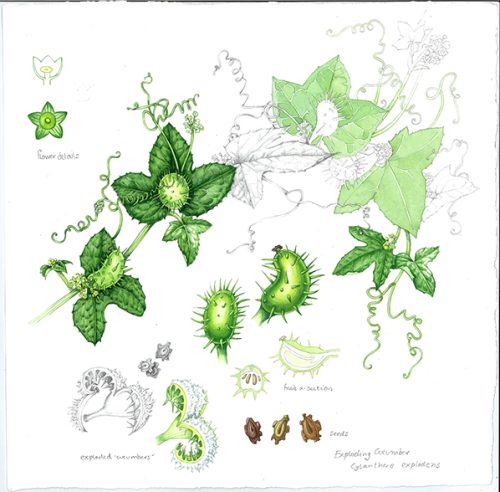
As a freelance natural history illustrator, I love the random nature of my commissions, and a recent request for some botanical sketchbook-style illustrations of the exploding cucumber Cyclanthera explodens was no exception.
The request comes from a client working in the world of botanical cocktail research, so I was intrigued before I’d lifted a pencil.
The exploding cucumber: An extraordinary plant
I had never heard of this plant before, and as I researched it online I became more and more intrigued. Just have a look at this youtube clip by Japan weekly Gardening to see why!
First up was to gather botanical information and photo ref of all aspects of this extraordinary plant. The internet is wonderful for this, but you need to be aware that captions may be misleading, copyright needs to be respected, and information may not have been peer-reviewed (for more on working from reference not botanical specimens, please see my blog)
Next, I draw up the pencil rough onto Fabriano Artistico hot press paper, normally with a mechanical pencil. The trick here is to include all aspects of the plant and its’ biology, in a way that’s visually pleasing. I’m pretty obsessed by the way these fruits explode, and love the curls and twists of the cucumber tendrils; so included plenty of information on these two aspects of the plant.
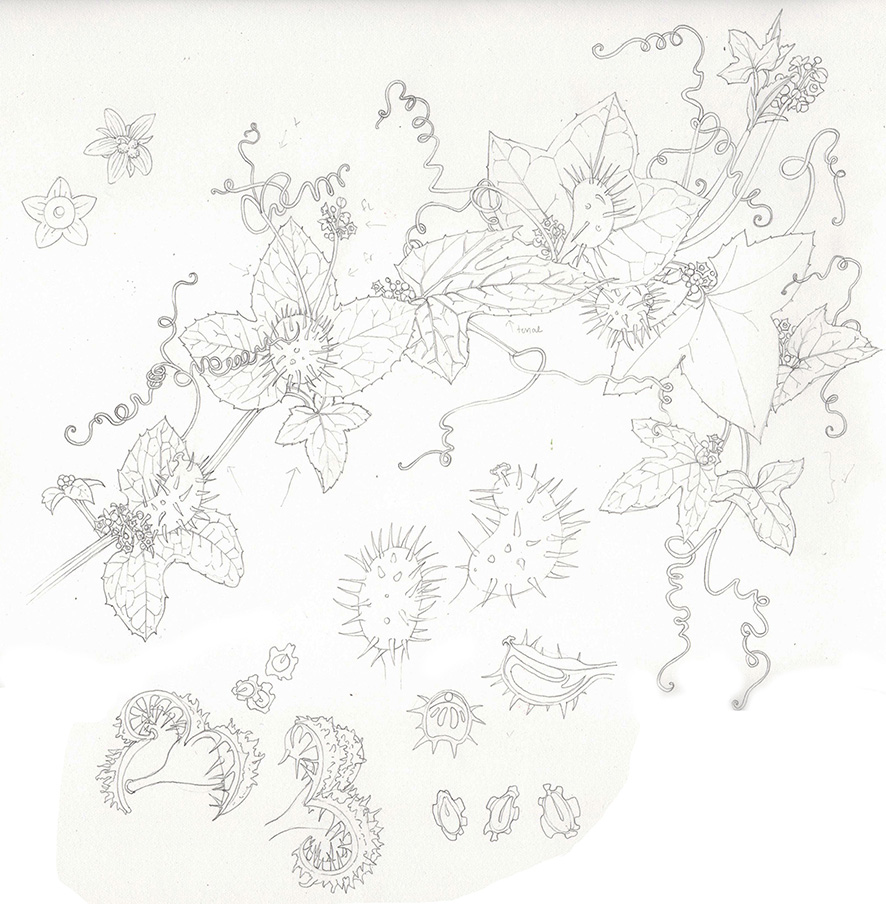
Pencil rough of the Exploding Cucumber Cyclanthera explodens
Painting the Exploding cucumber
Next it’s time to get painting; as always I use Winsor & Newton paints and Winsor & Newton series 7 sable brushes (a number 1). I plot in the darkest shadows on the leaves, using a yellowish green based on hooker green and yellow ochre.
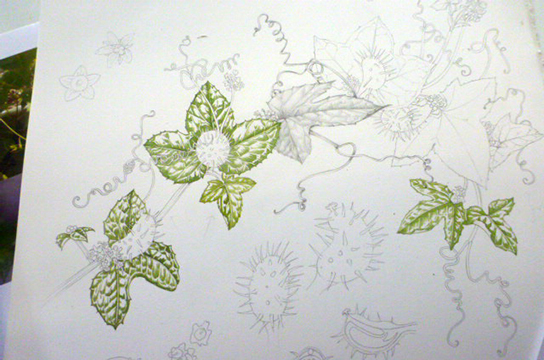
Then a paler wash ontop of this is applied; the same colours but watered down. Disaster strikes! My pencil eviscerated its leads all over the illustration and the wet paint! All I was trying to do was get at the tiny rubber on the end. Careful work with tweezers and a stoical refusal to panic saved the day.
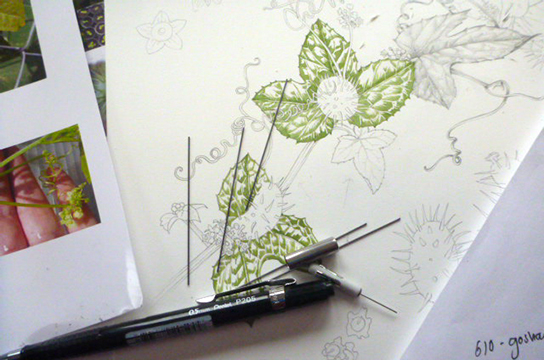
Tonal studies
I like to include pencil studies of tonality when doing sketchbook studies, so explored the rises and falls of the shadows on a leaf, and the tones on the tendrils. As before, I use my trusty mechanical pencil, the P205 (2H or HB), as there’s never any need to sharpen it – you simply press the lead and the broken edge is as crisp as anything.
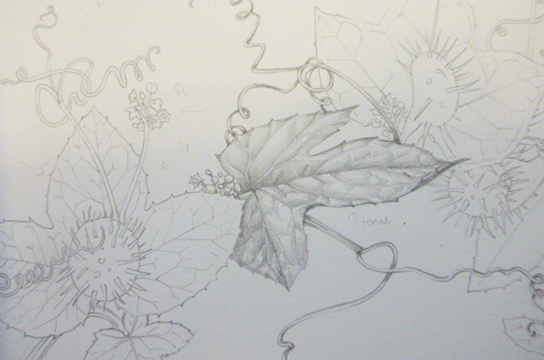
More work on the leaves follows, working into the darks with hooker green mixed with yellow ochre, violet, and vandyle brown, and adding some winsor blue to the mix for the darkest darks.
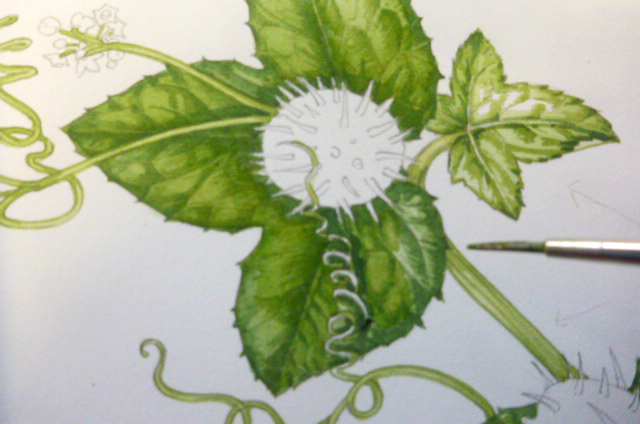
Painting and drawing the spiky fruit was really tough; how do the spikes protrude? Where do they cast their shadows? What happens to the underlying structure of the fruit post dehiscence? All of these problems would’ve been so much easier to solve with a few specimens to examine (and I would LOVE to get to be the one that prompts the explosion!) Colour matching was easier as the reference was pretty consistent; a pale blueish green. Cerulean blue, sap green, cadmium yellow light, a touch of white and a lot of water. Shadows thanks to a pale purple and cobalt blue wash.
Finding reference of the mature seeds, which I wanted to include, was also tricky. However, with enough trawling online you can find most things, and so it was in this case. A brown wich varied from ochre to deep chestnut. In fact these are the colours I would have made an educated guess at, but if you’re completing a botanical illustration there can be little room for guesses, only for botanical accuracy.
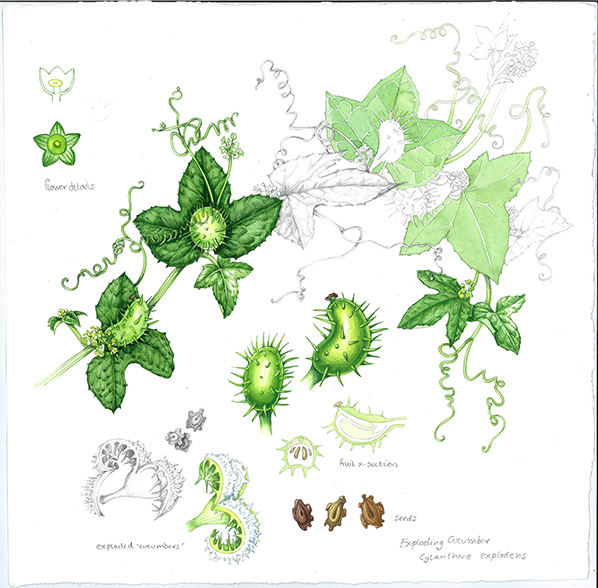
So the piece is complete, and by illustrating it I feel I’ve learned quite a bit about the plant. I’m still fascinated to know how it can be used in cocktails, and look forward to seeing the work used in situ, but for now I’m happy to know that I’ve learnt something about another wonderful plant.

